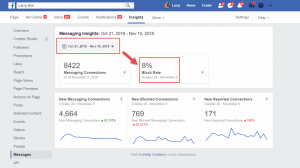Do you dream of being a freelancer who can afford to travel and work anywhere in the world? You must be filled with envy (we know we are!) every time you see photos of digital nomads working by the white sand beaches of Thailand, working on web design, writing, or social media management. Indeed, it is everyone’s dream job, right?
However, no matter how attractive those nomads make freelancing appear to be, being a freelancer is actually very challenging.
One of the biggest challenges you will face is actually finding work. The freelance industry is growing, and that means the competition is growing with it. In order to be a successful freelancer, you must know how to set yourself apart from the rest and be hired on your own terms.
To help you with that, this article is going to feature ten tried and tested ways you can win more projects as a freelancer.
Make Your Freelance Portfolio Website
First thing’s first. If you are serious about freelancing, you have consider it a business. What do all serious businesses have in common? If your answered, investing in a website, you’d be correct.
In a by-gone era, physical portfolios were used to showcase one’s talent to employers or clients. In today’s digital age, that’s no longer the case, with some exceptions. If you’re working as a online freelancer, you’re typically looking to provide your clients with digital work samples. The best way to do so is by creating an impressive portfolio website where you can showcase all your best work.
By creating a website for yourself, you’re proving two things. You’re proving you’ve done the work, as it’s showcased on your website, and you’ve proven you have the technological savvy required of creating and maintaining a website. Now whether you’re working as a developer or writer, you’ll need to have working knowledge of content management systems.
Freelancers who can demonstrate they are competent, posses relevant skills, and are technologically savvy will be the ones who get hired.
If you’re not exactly technologically literate, don’t worry. Web design doesn’t have to be complicated. It just needs to be responsive and look professional. At the very least, your website should include your specialized portfolio pieces, a good head shot, and important details related to your freelancing work history (resume). Don’t forget to include a ‘Contact’ page as well, so potential clients can easily get hold of you.
Keep Your Website Updated
Your website is the perfect platform for establishing yourself as a specialist in your field, so keep it update. As your work grows, so does your portfolio. By providing more advanced work samples in your portfolio, you can become an authority, who can demand more compensation from clients.
More work samples means more room for specialization. For that reason, collect and keep all of your work in a Google Drive folder. After some time, you’ll have a choice work pieces to choose from and further build out a specialization.
The best way to achieve an ‘expert’ status is to post content to your website portfolio regularly. Plan out a day every month or two to update your website with targeted work samples, so you can get closer to becoming an expert in your niche.
Request Testimonials From Clients
This might sound obvious, but you will be surprised how many freelancers fail to do this. You have to get social proof of a job well done. It’s how you will base your freelance reputation, and a reputation is everything to a freelancer.
That means, of course, you have to get testimonials from your satisfied clients. It will give you a much-needed boost when looking for more work, as it will give future clients a point of reference of your capability.
If you are just starting, though, focus on earning great endorsements one job at a time. It takes time to build a reputation. Make sure the one you’re building doesn’t have an hiccups. That way, it wont matter if you don’t have the most endorsements. Just make sure they’re all great endorsements. Clients look for quality over quantity. Moreover, develop a strong personal brand. Yes, you are freelancing yourself now. That means your brand is you.
Perfect Your Copy
Copywriting makes up a large portion of freelance jobs. If you don’t know what copywriting is, it’s the art and science of persuading your potential customer. It’s both an art form and a science. By this, I mean to say writing creative copy takes artistic skill. Every word has a purpose. How you put them together to persuade and convince is art. However, copywriting is a two-sided coin. On one hand, it takes artistic skill to craft copy; on the other, it takes testing copy to see which is the most effective. The act of testing your copy comprises the scientific portion of copywriting.
In order to perfect your copy, you’ll need to become better at both writing and testing good copy.
Testing is the easier part of the equation, so we’ll get that out of the way. Simply, all you’re doing is comparing copy to see which is the most effective at driving objective completions. As a freelancer, you’ll need to ask the client what objectives they’re looking to complete with content. Once you understand the objective, do preliminary research based around your topic, seeing which businesses are successful, and replicating their approach. If the copy isn’t producing the results the client is asking for, alter your copy by testing different styles.
Business oriented copy (most relevant to client work) can be broken down into several primary categories:
- informational
- storytelling
- conversational
Informational Copy
Informational copy is the kind where your primary objective is to educate the reader. With this type of content, you have to know the audience you’re educating. Here’s where you can ask your client for customer demographics.
If you have a general understanding of what they already know, what they don’t, how educated they are, and what they hope to learn from the content, you can formulate a game plan to present the information in the most efficient way.
Do this by prioritizing the material you’re looking to teach. Create a hierarchy of the most fundamental concepts or labels and list them in order of importance.
Make an outline that makes logical sense, where one topic flows into the next, the prior acting a logical entry point into the next. Chunk these sections into smaller paragraphs and create headings and sub-headings, making the information easier to follow.
Make your writing clear. Don’t use jargon unless you have to, as you want to make your writing accessible to the lower common denominator of your demographic.
Lastly, make it practical. The information you’re providing should be used to qualify a customer further along the purchase journey by educating them closer to point where they can make a purchase decision.
Storytelling Copy
In writing for storytelling, your main aim is to engage people through an interesting story rather than educate them.
In this form of copywriting, you’re going to want to write about a time where people who have used the client’s product or services had suffered challenges that are relatable. After you’ve established the challenges they have faced, you’re looking to write how the client’s business help them overcome those challenges.
Position the people overcoming their challenges as champions, as they are the heroes of the story. Position the client or business as the mentor who was able to help the heroes “complete their challenge,” sort of speak.
By positioning the customers as heroes, you make them look good and, therefore, relatable in the minds of others. People, then, begin to focus on the moral of the story, which is that your the client’s business was the catalyst for overcoming those challenges.
Like most stories, the formula uses 3 acts; hence, split your copy into three phrases. In phase one, introduce the hero and their circumstances. In phase two, introduce the conflict or challenge. Lastly, in phase three, present the solution to the issue and how the hero overcame their challenge by using it.
Conversational Copy
The most informal of the three, conversational copywriting is a dialogue between you (the client’s business) and the customer.
It’s a straightforward approach and works in circumstances where its harder to for customers to wrap their heads around a business product or service. In this case, writing conversationally helps to pull back the curtain on the business and industry.
Think about products like SEMrush and AHrefs. They are complicated products, so the more conversational they become, they more relatable they are. This approach can lower the barrier to entry of a product or service.
Another instance where conversation copy is a good idea is if the brand’s personality fits the merits of talking to customers on their level. With conversational copy, you can inject the most fun and excitement into your writing.
It’s also the writing style that gives the most freedom to copywriters. You can carve out a unique identity for your clients by writing conversationally. Even using things like humour and memes to supplement conversations can be of great effect in this style of writing.
Ask for Referrals
As a freelancer, your biggest source of business is referrals. Don’t hesitate to ask for referrals from your previous and current clients. How exactly do you do that?
The simple answer is to just simply ask for them. There’s nothing too complicated about it. If you do good work, there’s no reason for clients not to endorse you. However, If you have reservations about asking for a referral, do it upfront before you accept the work. Stipulate upon the completion of your contract, you expect a referral.
Asking for referrals is a low-risk and high-reward proposition. That means you should be doing after completed contract.
Ask for More Work
Since you already have the client, why not reach out after a job well done to see if they can provide you with more work.
Or ask old clients if they have any more work for you. The main obstacle most freelancers face is getting work, so do yourself a favour and proactively seek work from those who have already given it you. Leverage your network to work for you.
If you ask a client for more work and they say no, you can always come back to them after some time and ask again.
Don’t Forget Time Zones When Accepting a Job
If you are looking to get hired internationally, you should be aware of time zones and adjust your work time accordingly to fit with that of the clients.
You might belittle time zones as a minor detail of freelance work, but it can make the difference between an easy and hard deadline. If you’re working for a client across the globe and are expected to deliver in the middle of the night, you’re going to have to adjust your work schedule to compensate for off hours to beat the deadline.
For example, if you are in North America, and you’re working for a client in Asia, there’s a large time zone difference. As all online work needs a good amount of communication, you’ll need to prepared for clients calls and conferences late at night to get the work done.
This can be a difficult task, especially, if you are working for multiple clients.For that reason, You should adjust your schedule, so you can be awake at the same time that your potential clients are. This may mean scheduling sleep during the day, so you can meat deadlines and attend online meetings.
Our tip is limit the number of countries you’re bidding to work in. If you are working internationally, do your best to align your jobs to a specific region that’s time zone differential is manageable for your work schedule.
Bidding on Freelance Job Sites
There are a lot of job sites for freelancers out there, like Upwork.com (formerly oDesk and Elance) and Freelancer.com. Most freelancers start their journey by joining these kinds of sites.
Keep in mind, there is one important thing you should know about these sites: bidding on work can be a competition as to who can bid the lowest for the job.
Do not bid low, and don’t be discouraged by low bids. Justify your rate by emphasizing the value your clients will get from your services. If you are already a professional in your field, state that clearly in your proposal. Communicate in terms of value. Surprisingly, most people won’t expect high-quality work if you are offering your work at very low prices.
Rather, a better strategy is to reverse engineer your income pipeline. If you know you want to make a certain amount of money a month, you’re going to have to know what variables freelance workers use to gain their income when bidding for jobs.
- price
- hours worked
When you bid on a job, you bid on a price for the job based on how long it will take you. Your experience level may lead to less hours work and higher quality work; however, since experience is relative, we’ll only include price and hours as definite variables for freelancers.
With these two variables in mind, you can make more money by upping your bid price or by working more hours at a fixed price. Those are the only two ways to make more money as a freelancer.
If you reverse engineer how much you want to make in a month, lets say $ 2,000, you can establish a baseline for your work after determining how many hours you can conceivably give. If you can give 120 hours a month, you’ll understand you need to make $ 16.60 an hour.
This will vary project to project, but you’ll get a sense of your baseline, and can create a bid requirement that averages to your hourly rate.
Don’t Forget About Your Goal
If you are already experienced in your field, it’s easy to boast how good your web design is or how you can write a journalistic-style article. There is nothing wrong with that, just as long as you keep one important aspect in mind.
Clients are looking for a freelancer to solve a problem for them. Most people aren’t really that interested if you can write or code with your hands behind your back. They just need you to help solve a problem. Hence, when you are communicating with people, always keep in mind that you are there to help them solve their problem.
Improve Yourself
If you truly want to get more clients and to charge more, you will need to continuously educate and improve yourself. You will have to learn more about your field, or learn something new that complements your field.
The more things you know, the easier for you to suggest a problem-solving solution. Ultimately, your clients will see you as a true expert and won’t hesitate to refer your work to someone else and/or pay you more.
Being a freelancer can be very rewarding. However, it has its own set of challenges that is not found in the corporate field. One of those challenges is finding more clients, so keep the above tips in mind, and you’ll be ready to conquer the freelance job market.
Business & Finance Articles on Business 2 Community(128)
Report Post







